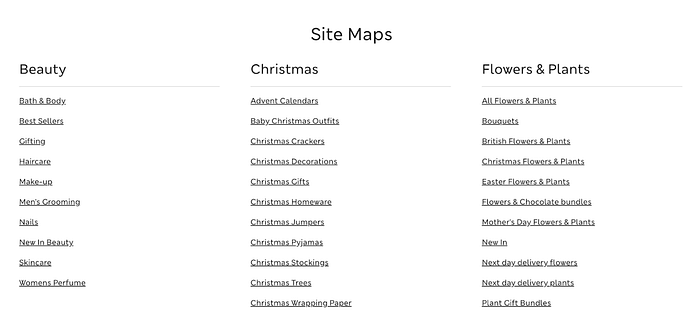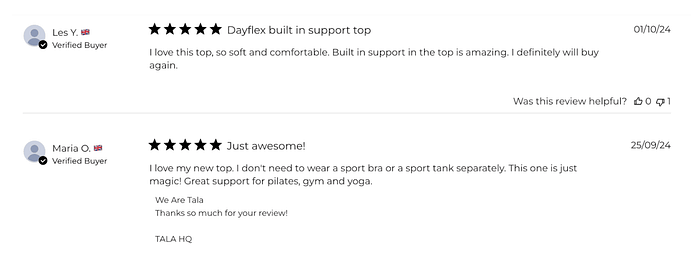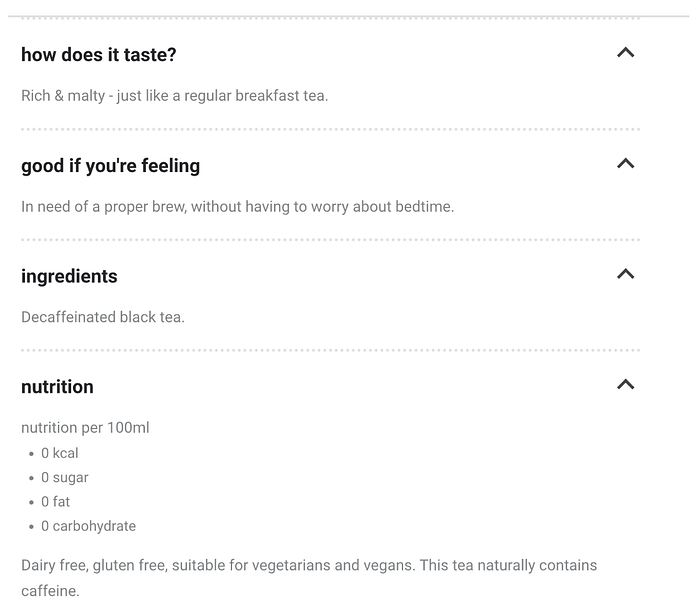9 Must-Have SEO Checklist Items for Your eCommerce Site
All eCommerce websites need to implement these 9 SEO fundementals.
Are you preparing your eCommerce website for the second busiest season of the year? It’s never too late to make some final adjustments. Our nine must-have SEO checklist items will ensure you have the correct foundations to maximise traffic, sales and revenue while making it straightforward for new and returning customers to find the items they want. Check out our tips below!
#1 — Long Breadcrumbs
Breadcrumbs are the navigational links typically found at the top of category or product pages. They show users their browsing path, helping them understand where they are within the site’s structure.
But breadcrumbs are not just valuable for users — they also benefit search engines. By offering a clear trail of links, breadcrumbs make it easier for Google to crawl and understand the hierarchy of pages, improving site indexation and SEO.
#2 — Optimised Homepage H1
The H1 tag (heading one) is one of the most essential elements Google uses to understand the content and context of a webpage. Yet, many eCommerce sites neglect this key SEO opportunity, especially on their homepage.
We recommend optimising the H1 tag to reflect your site's overall product offering rather than focusing on seasonal promotions like “Black Friday Sale” or “Summer Discounts.” This ensures that your H1 remains relevant year-round and aligned with core keywords.
For example, instead of a seasonal term (currently writing this in Black Friday week), Forthglade uses the H1 “Natural Dog Food,” which better captures their product category and target audience.
#3 — Title Tag on the Homepage
The title tag is clickable text that appears on search engine result pages (SERPs), typically shown as a blue link. Like the H1, it’s a critical element for SEO.
We suggest crafting your homepage title tag to highlight essential keywords for your business while also incorporating unique selling points (USPs) like “free shipping,” “fast delivery,” or “10% off your first order.” These additional details can make your link more appealing in search results and help drive more clicks.
#4 — HTML Sitemap
At NOVOS, we always recommend including an HTML sitemap. An HTML sitemap provides a direct path to your key collection pages, which helps search engines crawl and index your site more efficiently. It also strengthens your website's internal structure.
When creating your sitemap, we suggest only linking to core collection pages, meaningful blog posts, and FAQs to avoid overwhelming users or search engines with unnecessary links.
#5 — Product Reviews
Product reviews are valuable for showcasing social proof and building trust with potential customers — they also play a significant role in enhancing your site’s E-E-A-T (Expertise, Authoritativeness, and Trustworthiness) score in Google’s algorithms.
Encourage customers to leave detailed reviews, and ensure you feature them prominently on product pages (please see an example below).
You can then mark these reviews up within the product schema so that they appear in the Google search results.
The more authentic, informative, and relevant the reviews, the more likely they will positively impact your SEO. If this set-up is available, encourage users to leave photo reviews or implement the verified buyer option (see below). These add an extra layer to the review and tap into the ‘experience’ element of E-E-A-T.
You can find more examples of excellent E-E-A-T on our knowledge hub here.
#6 — A Blog
At NOVOS, we recommend providing fresh, helpful content on your brand’s blog.
Blogs are an excellent way to:
Establish authority and expertise: A well-written blog demonstrates your brand’s knowledge of relevant topics, which can improve your E-E-A-T ranking in Google.
Drive non-branded traffic: By targeting long-tail keywords and covering a broad range of relevant topics, blogs help capture search queries beyond your branded terms.
Internal links: Use blog posts as an opportunity to link to your key commercial pages, boosting their visibility and performance.
For example, you could link to category pages, product pages, or even related articles within blog content. This practice can support SEO and guide users through the site.
Interested in building your eCommerce blog? NOVOS offers multiple content services, from content strategy and keyword research to content production.
#7 — Links, Links, Links!
To improve the performance of your category pages, we recommend building as many relevant links to them as possible, both internal and external.
Internal links include:
Links to category pages in your main menu and drop-down navigation.
Breadcrumb links to connect relevant pages further (see point 1).
Linking to category pages within blog posts, articles, and product descriptions.
“People also liked” or “recommended products” sections on PDPs that also link back to related category pages.
Subcategory links at the top of each category page to guide users deeper into your site.
Here’s a great example of subcategory links from Oliver Bonas:
External Links (Backlinks):
External backlinks from reputable websites significantly boost your site’s authority and ranking.
One effective strategy is to hire a Digital PR team to secure quality backlinks from trusted sources in your industry.
Ideally, you would want these backlinks (press coverage) to link directly back to your category pages rather than the homepage or product pages.
This passes more authority to those pages and enables them to rank higher in the search results.
Interested in exploring DPR? Check out our ‘Digital PR Guide for SEO’ to learn more, or contact us here to explore our DPR service.
#8 — User-Friendly Product Names
Your product names must be easy to understand and relevant to what users are likely searching for. Avoid overly technical or vague names that are unlikely to match common search queries.
For example, calling a plant “Rachel” or “Lily” might be memorable, but it’s not helpful for users searching for a specific product like a “Peace Lily.” Similarly, overly technical names might confuse customers and search engines.
Instead, use descriptive, keyword-friendly product names that clearly define what the product is “e.g. small peace lily.”
#9 — Optimised, Easy-to-Read Product Descriptions
Clear, concise, and SEO-friendly product descriptions are essential, especially for brands that operate online only and don’t have physical stores where customers can see or touch the products before purchasing.
Here are some tips to improve your product descriptions:
Use subheadings and bullet points to highlight key product features and make scanning easier for customers.
Incorporate relevant keywords for SEO, without keyword stuffing. Write in a natural tone that appeals to search engines and your audience.
Provide detailed information, especially for products that require special conditions (e.g., care instructions for plants or specifics for gift items like pre-mixed cocktails).
For inspiration, brands like Tea Pigs and Patch Plants are great at creating informative and engaging product descriptions that inform and convert customers.
Stuck for ideas or need more information on how to implement these techniques on your site?
Here are some more helpful articles to help you with your strategy:
This post was originally published on the NOVOS website. To get updated on more content like this, join our mailing list: https://newsletter.thisisnovos.com/












